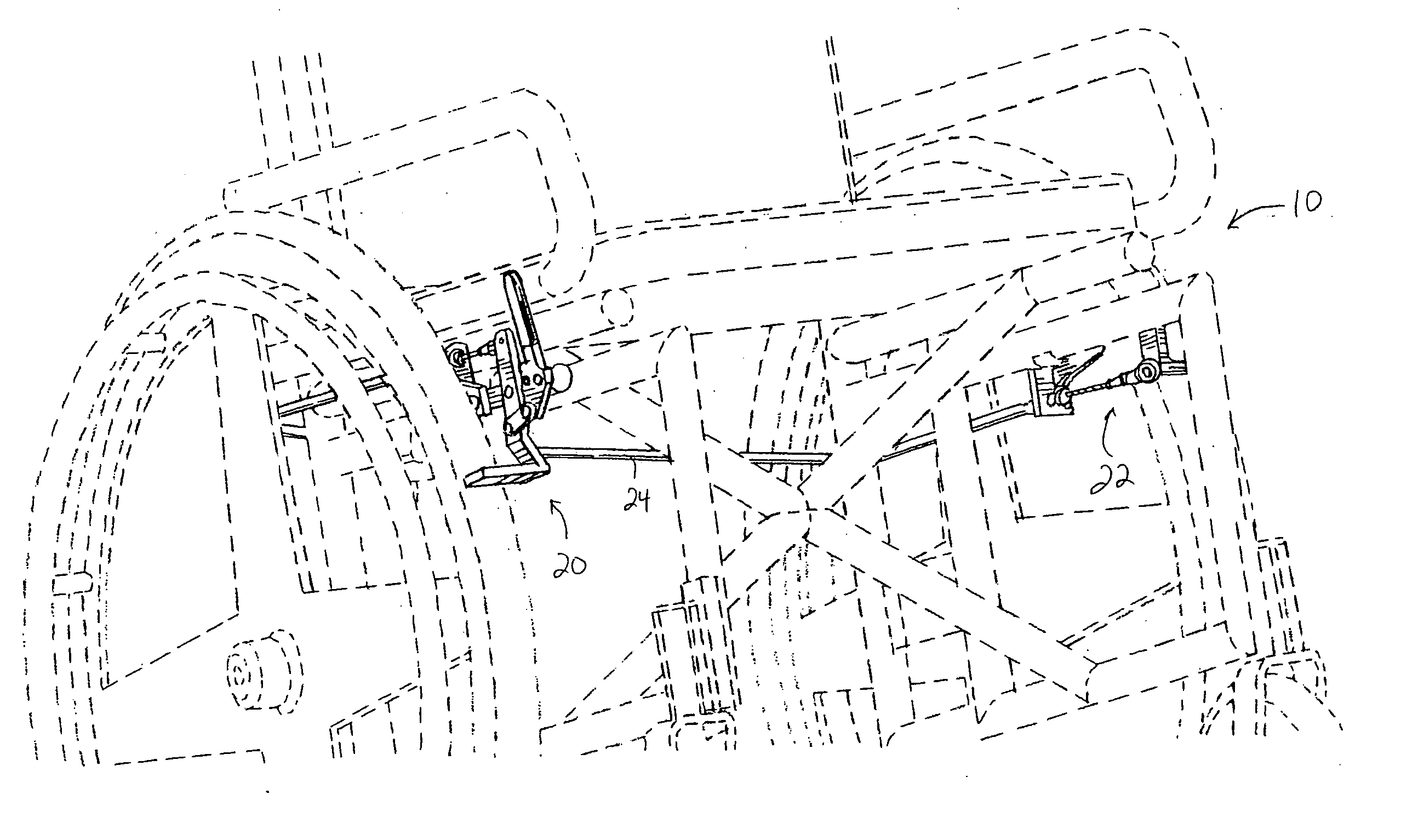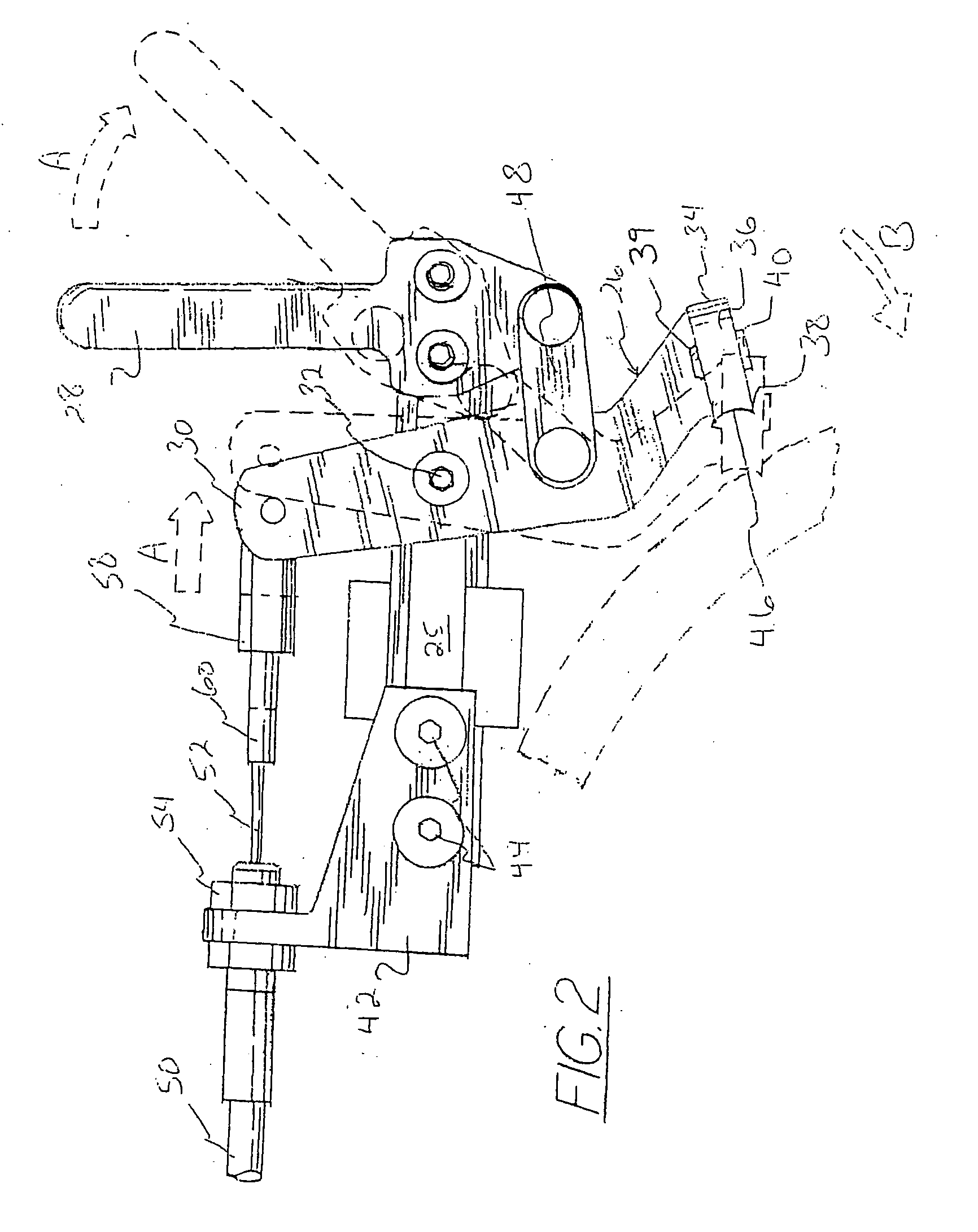Wheelchair wheel lock
a technology for wheelchairs and wheels, applied in the field of wheelchairs, can solve problems such as slippage, and achieve the effect of preventing inadvertent travel of the chair and increasing weakness in a particular hemispher
- Summary
- Abstract
- Description
- Claims
- Application Information
AI Technical Summary
Benefits of technology
Problems solved by technology
Method used
Image
Examples
Embodiment Construction
[0025] As best seen in FIG. 1 appended hereto, the wheel locking assembly 10 of the present invention may be mounted to a wheelchair (shown in broken lines for convenience) having a frame, a seat and back attached to the frame, and at least two primary drive wheels. Of course, the wheel locking assembly 10 of this invention will be mounted to the wheelchair such that the wheel locks are in spaced relation to the primary drive wheels to allow locking thereof. The wheel locking assembly 10 of the invention may comprise a first wheel stop 20, a second wheel stop 22, and a substantially continuously flexible linkage 24 operably connecting the wheel stops 20, 22. Wheel stops 20, 22 may be fabricated of any suitably durable, corrosion-resistant material commonly used to fabricate wheelchair wheel stops, including but not limited to metals such as aluminum and stainless steel, and suitably durable plastics
[0026]FIG. 4 is a perspective view of a dual-lever embodiment of the wheel locking a...
PUM
 Login to View More
Login to View More Abstract
Description
Claims
Application Information
 Login to View More
Login to View More - R&D Engineer
- R&D Manager
- IP Professional
- Industry Leading Data Capabilities
- Powerful AI technology
- Patent DNA Extraction
Browse by: Latest US Patents, China's latest patents, Technical Efficacy Thesaurus, Application Domain, Technology Topic, Popular Technical Reports.
© 2024 PatSnap. All rights reserved.Legal|Privacy policy|Modern Slavery Act Transparency Statement|Sitemap|About US| Contact US: help@patsnap.com










